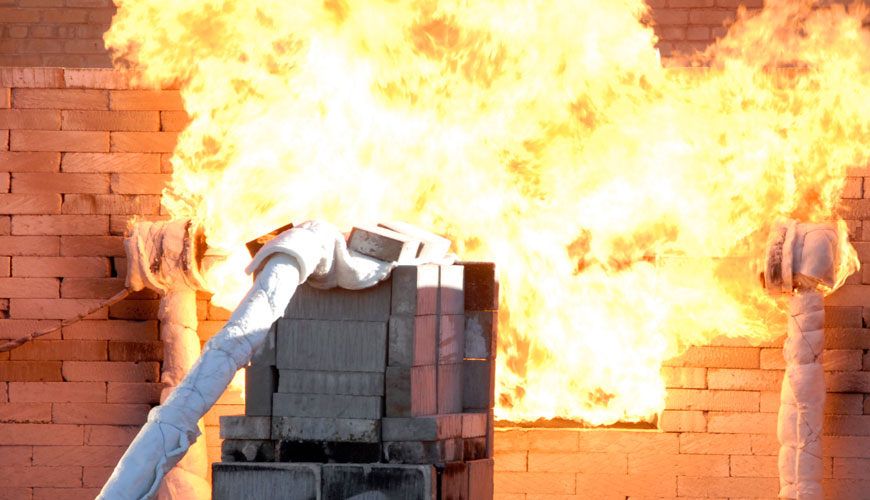

EUROLAB, with its state-of-the-art accredited laboratories and expert team, provides precise and fast testing services within the scope of EN ISO 11925-3 testing. This part of EN ISO 11925 specifies a range of ignition sources that can be used to determine the flammability of materials, composites and assemblies when subjected to direct impact by flames of varying size and intensity but without affected radiation. Welds can be used in isolation or with the specified test method.

This test method determines the flammability of a material, composite or assembly and is not designed to evaluate any other fire parameter (eg flame spread). The possibility of the material composition or assembly causing secondary ignition of other materials is also evaluated by observing the burning droplets or debris that may form.
Fire is a complex phenomenon: its behavior and effects depend on a number of interrelated factors. The behavior of materials and products depends on the characteristics of the fire, the method of use of the materials and the environment to which they are exposed. The philosophy of "reaction to fire" tests is described in ISO 3814.
Except in rare cases of self-ignition, it is essential for any fire to start, whether smoldering or flaming, by applying or somehow making contact with a product so that the combustion continues.
The ignition source can be in three forms, applying heat by conduction or radiation or convection. An example of conduction ignition is a coil of hot wire or a hot metal rod; by radiation by an electric rod heater; and by convection with a convection heater or paint stripper. Generally, sources of ignition of the radiant type involve some degree of convection, and a flame includes the contribution of all three.
A test as specified in this part of EN ISO 11925 is concerned only with a simple representation of a particular aspect of a potential fire situation characterized by the play of flame directly on a material, compound or assembly. It cannot alone provide any direct guidance on behavior or safety in a fire.
However, such a test can be used for comparative purposes or to ensure the existence of a certain quality of performance (in this case flammability) which is generally considered to have an effect on fire performance. It would be wrong to attribute any other meaning to performance in this test.
EUROLAB assists manufacturers with EN ISO 11925-3 test compliance. Our test experts, with their professional working mission and principles, provide you, our manufacturers and suppliers, the best service and controlled testing process in our laboratories. Thanks to these services, businesses receive more effective, high-performance and quality testing services and provide safe, fast and uninterrupted service to their customers.
To get an appointment, to get more detailed information or to request an evaluation, you can ask us to fill in our form and reach you.